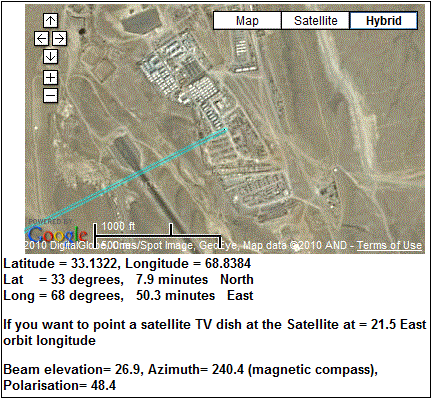Satellite Internet Forum.
Welcome, Guest. Forum rules.To search this site click here > SATSIG search
| Home Login Register |
| Satellite Internet forum › iDirect Forum: hubs and terminals › iDirect 3000 issue with TS2 service |
|
Pages: 1
|
iDirect 3000 issue with TS2 service(Read 8624 times) |
|
micky55
Member
★★ Offline Posts: 5 |
May 6th, 2010 at 6:18am
|
| Back to top |
« Last Edit: May 6th, 2010 at 9:38am by Admin1 »
IP Logged
|
|
dot
Senior Member
★★★ Offline Posts: 118 |
Reply #1 - May 6th, 2010 at 11:04am
|
| Back to top |
IP Logged
|
|
micky55
Member
★★ Offline Posts: 5 |
Reply #2 - May 7th, 2010 at 5:02am
|
| Back to top |
IP Logged
|
|
Eric Johnston
Senior Member
★★★ Offline Posts: 2109 |
Reply #3 - May 7th, 2010 at 9:28am
|
| Back to top |
IP Logged
|
|
micky55
Member
★★ Offline Posts: 5 |
Reply #4 - May 7th, 2010 at 12:47pm
|
| Back to top |
IP Logged
|
|
Eric Johnston
Senior Member
★★★ Offline Posts: 2109 |
Reply #5 - May 7th, 2010 at 3:33pm
|
| Back to top |
« Last Edit: May 7th, 2010 at 7:39pm by Eric Johnston »
IP Logged
|
|
micky55
Member
★★ Offline Posts: 5 |
Reply #6 - May 7th, 2010 at 7:01pm
|
| Back to top |
IP Logged
|
|
Eric Johnston
Senior Member
★★★ Offline Posts: 2109 |
Reply #7 - May 7th, 2010 at 7:32pm
|
| Back to top |
IP Logged
|
|
yazzdan
Member
★★ Offline Posts: 47 |
Reply #8 - Jun 11th, 2010 at 2:01pm
|
| Back to top |
Regards,&&Syed Irfan Hasan&&iDirect & VSAT Engineer
IP Logged
|
|
imNAK
Member
★★ Offline Posts: 25 Afghanistan |
Reply #9 - Jul 20th, 2010 at 11:01am
|
| Back to top |
NoorAhmed
IP Logged
|
|
Pages: 1
|
Email me: eric@satsig.net
Powered by YaBB 2.5.2!
YaBB Forum Software © 2000-. All Rights Reserved.
Disclaimer, Terms of Use and Privacy Forum User Agreement Forum rules Cookie policy.




